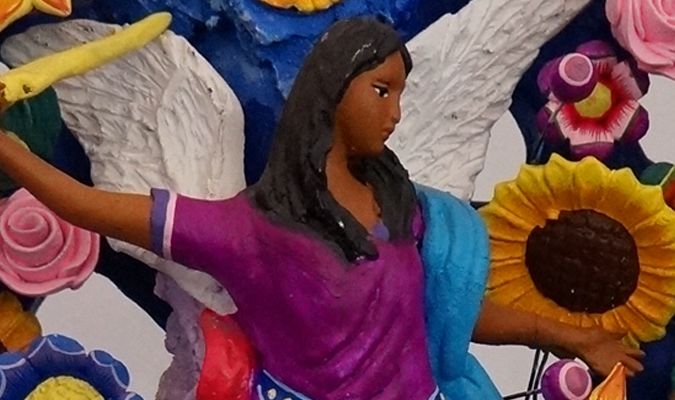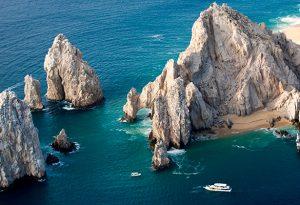Easter in Mexico is a two-week holiday consisting of Semana Santa (The Holy Week, beginning on Palm Sunday and ending Easter Saturday) and Pascua (Starting with Easter Sunday and ending the following Saturday). Semana Santa is undoubtedly the most important holiday in Mexican culture. Schools and often businesses in Mexico close during these two weeks and many Mexican families go on holiday during Semana Santa and Pascua.
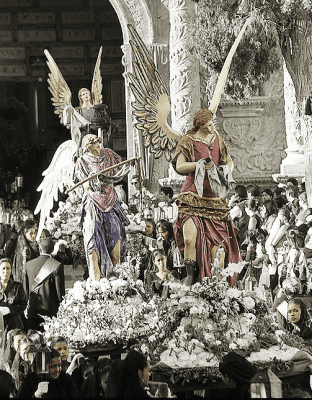
photo via mexperience.com
Across the country, Mexicans celebrate the last days of Christ during Holy Week with elaborate and much anticipated processions, ceremonies, and rituals. Most of the larger Semana Santa celebrations include a dramatic reenactment of the capture, the trial, and the crucifixion of Jesus. To be a part of these productions is a great honor and the actors are known for delivering inspiring and moving performances. Different regions of Mexico are known for practicing unique traditions during Semana Santa such as acts of physical torture, public displays of political/social ridicule, and displays of resolutions and commitment.
In some of the more devout regions of Mexico like Taxco, the reenactments include penitentes – men and women who show their penitence and prove their faith by inflicting physical pain on their bodies by whipping themselves or carrying large religious objects on their backs. This is an ancient tradition that dates back to the middle ages and was introduced to Mexico by the Spanish more than 500 years ago. During the reenactments, the actor playing Jesus usually wears a real crown of thorns and carries a massive cross weighing hundreds of pounds over great distances to the scene of crucifixion. Actors prepare both physically and mentally for months before hand with the support of their families and communities.
In towns like San Miguel de Allende, another Spanish-influenced tradition is celebrated during the Holy Week called “The Burning (or Firing) of the Judases.” In Spain, carpenters would make wooden dolls representing Judas, which would be hung and burned in town squares to punish Judas for betraying Christ. During the Holy Inquisition, when the Spanish were burning people at the stake for heresy, Mexicans protested by making dolls and dressing them like Spanish inquisitors and burning them instead of Judas. This evolved into the current tradition where giant Judases made from paper mache are dressed and painted to resemble political and public figures not currently in favor of the public. The dolls are then hung and blown up with fireworks, scattering limbs in the street for children to collect as souvenirs. Famous Mexican artists like Diego Rivera and Frida Kahlo were strong proponents of the value of art in political commentary and quickly adopted the tradition of creating Judases.
Other traditions focus on different ways to show your dedication and appreciation of Jesus’s sacrifice. In Iztapalapa, people called Nazarenes parade the streets before the procession of Christ, marching in promise to fulfill a manda, or religious promise, as payment for a granted favor from God. In many regions of Mexico, people show their devotion by visiting twelve different churches in a single day – one church for each apostle. In more remote regions like the Copper Canyon, local cultures mix christian celebration with ancient native rituals, paying homage to both their Spanish and Indian heritage (see: Copper Canyon Semana Santa Trek).
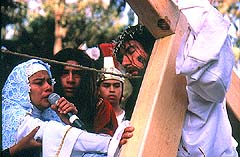
photo via mexperience.com
Once the sacrifice is made and Jesus rises from the dead, Pascua begins and the second week of the Easter celebration carries on with a brighter tone, reflecting the resurrection, the start of Spring, and the promise of new beginnings. Many Mexican families travel to beach destinations like Acapulco and Puerto Vallarta during these Easter celebrations to enjoy the coast as they pay tribute.
Traveling to Mexico for Semana Santa and Pascua is an unforgettable experience, but can be tricky to plan logistically – especially last minute as the traditional areas of celebration and most beach destinations are usually booked in advance. Contact Journey Mexico for assistance with planning travel to Mexico for Semana Santa.
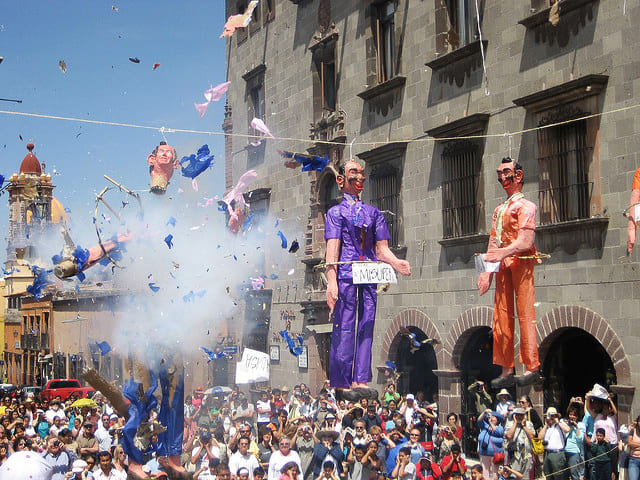
Start Planning to Experience Easter Traditions in MexicoTo witness or take part in Easter traditions is a unique experience in Mexico. However, logistically, it can be difficult to organize with luxury hotels and villas snapped up quickly. Make sure to speak to a Journey Mexico Travel Planner who can organize your whole trip for you taking in the very best celebrations throughout the country. Our custom-tailored journeys start from $1,000 USD per day for two travelers in interior Mexico, and $1,800 per day for two travelers in beach destinations. Contact Journey Mexico here. |

